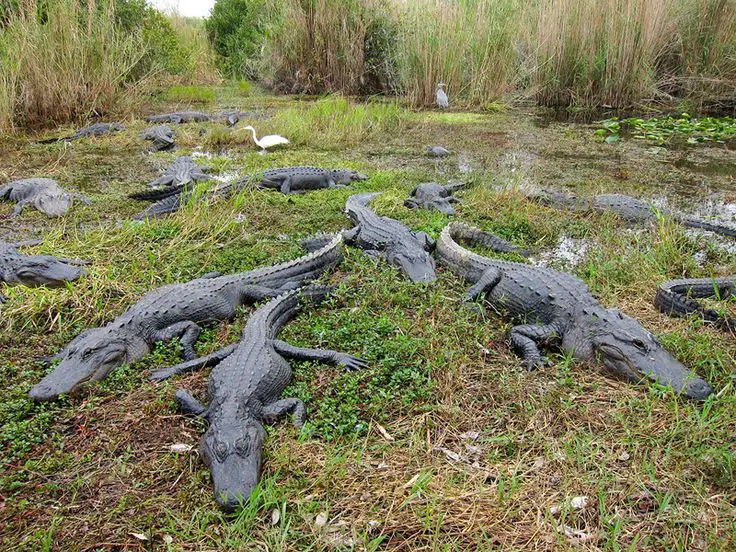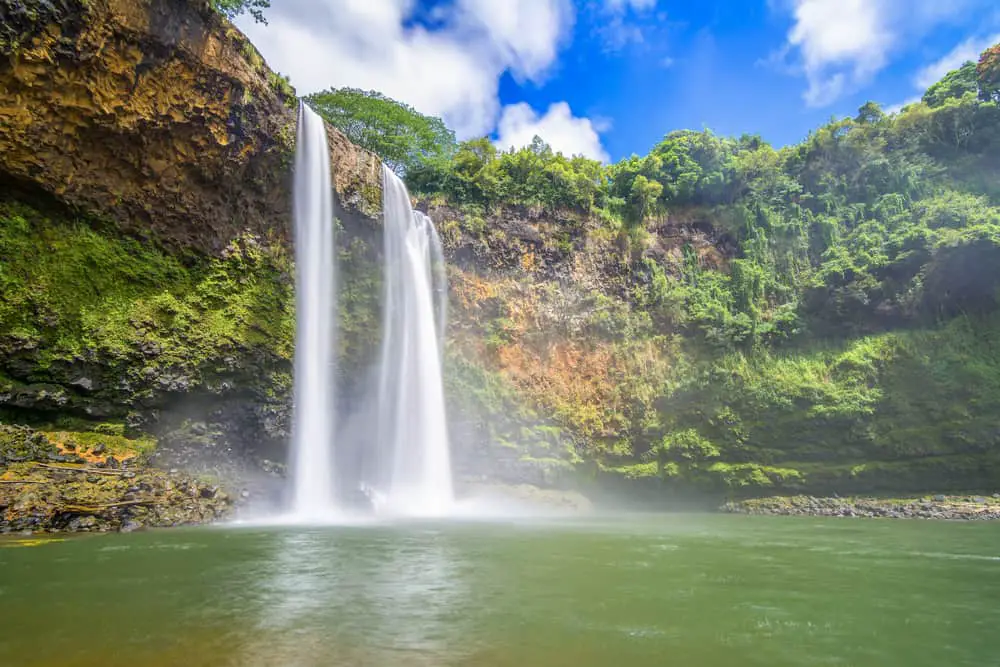Florida is a place full of surprises, from stunning beaches to lush mangroves and an abundance of wildlife. But did you know that some of the most impressive creatures you can find here are the crocodiles? If you’re looking for a wild encounter, you’ll be glad to know that there are places where you can see these ancient predators in their natural habitat. In this blog post, we’ll explore the different locations where you can spot these fascinating animals on Florida’s shores. Read on to learn about the best places to go for an up-close encounter with one of the world’s oldest living species!
The Difference Between Alligators and Crocodiles
Many people use the terms alligators and crocodiles interchangeably, assuming that they are one and the same. However, there are actually several key differences between these two reptiles.
One of the most noticeable differences is the shape of their snouts. Alligators have wider, U-shaped snouts, while crocodiles have narrower, V-shaped snouts. This distinction is a result of their diets; alligators typically eat smaller prey, such as fish, while crocodiles have a more diverse diet that includes larger animals.
Another difference lies in their habitat preferences. Alligators tend to live in freshwater environments such as lakes, ponds, and marshes, while crocodiles are found in both freshwater and saltwater habitats. This is why crocodiles can be found in coastal regions, such as the shores of Florida.
In terms of behavior, crocodiles are generally more aggressive and territorial compared to alligators. Crocodiles have been known to attack humans, whereas alligator attacks are much rarer. Additionally, crocodiles are known to have a higher level of intelligence and adaptability, which contributes to their ability to survive in a wider range of environments.
Despite these differences, both alligators and crocodiles are apex predators and play important roles in their respective ecosystems. Understanding their distinctions can enhance your wildlife viewing experience and ensure that you can identify these magnificent creatures correctly when exploring the wilds of Florida.
The History of Crocodiles in Florida
Florida has a fascinating history with crocodiles, dating back thousands of years. Once abundant in the state, American crocodiles (Crocodylus acutus) faced a sharp decline in population due to habitat loss and hunting during the 19th and early 20th centuries. By the 1970s, there were only an estimated 200 crocodiles left in Florida.
Thanks to conservation efforts and protective measures, the population of American crocodiles in Florida has since rebounded. Today, it is estimated that there are around 2,000 crocodiles living in the state, primarily in the southernmost regions.
One key reason for the successful recovery of the American crocodile population in Florida is the establishment of protected areas and conservation programs. Everglades National Park and the Crocodile Lake National Wildlife Refuge are two notable locations that have played a vital role in the crocodile’s preservation. These protected areas offer the crocodiles suitable habitat and protection from human interference.
It is important to note that American crocodiles are still classified as a threatened species, meaning they are at risk of becoming endangered if conservation efforts are not continued. Despite their increasing numbers, they are still considered relatively rare in Florida and encountering one in the wild is a special experience.
By learning about the history of crocodiles in Florida, we can appreciate the efforts made to conserve and protect these incredible creatures. Whether you’re a nature enthusiast or simply curious, visiting the places where crocodiles can be found offers a unique opportunity to witness their presence and contribute to their ongoing preservation.
Where to Find Crocodiles in Florida
Florida is home to one of the only places in the world where both alligators and crocodiles coexist – the Everglades National Park. This vast wetland ecosystem is an ideal habitat for these prehistoric creatures, and visitors to the park have the opportunity to spot both species in their natural environment. In particular, the Flamingo and Shark Valley areas of the park are known for their crocodile populations.
Another notable location for crocodile sightings is the Crocodile Lake National Wildlife Refuge in Key Largo. This protected area was established to preserve critical habitat for the American crocodile. Visitors can explore the refuge’s trails and boardwalks, offering the chance to catch a glimpse of these magnificent reptiles.
Aside from these two well-known locations, crocodiles can also be found in other parts of southern Florida, including Biscayne National Park, Big Cypress National Preserve, and the Florida Keys. These areas provide unique opportunities to observe crocodiles in their natural habitat and appreciate their role in Florida’s diverse ecosystem.
It’s important to remember that while crocodile sightings are possible in these locations, they are still wild animals and should be observed from a safe distance. Keep in mind that crocodiles are generally shy and tend to avoid human interaction. Always adhere to park regulations and safety guidelines when visiting these areas.
Exploring Everglades National Park
Everglades National Park is a sprawling expanse of wilderness located in the southern tip of Florida, known for its unique ecosystem and diverse wildlife. One of the highlights of a visit to this incredible park is the opportunity to spot American crocodiles in their natural habitat.
The Everglades provides an ideal habitat for these ancient reptiles, with its vast swamplands and brackish waters. As you navigate the park’s waterways, keep an eye out for these majestic creatures, distinguished by their long, narrow snouts and V-shaped heads.
One of the best places to find crocodiles in Everglades National Park is the Flamingo area. Here, you can take a guided boat tour or rent a kayak to explore the mangroves and coastal waters where these elusive reptiles reside. The Anhinga Trail, located near the park’s main entrance, is also a popular spot for crocodile sightings.
Remember, crocodiles are wild animals, so it’s important to observe them from a safe distance and never approach or feed them. Keep in mind that they are most active during the warmer months, particularly in the early mornings and late afternoons.
Exploring Everglades National Park is an incredible adventure that offers a chance to see these ancient predators in their natural habitat. So grab your binoculars, hop in a boat, and prepare for an unforgettable experience with the American crocodiles of the Everglades.
Visiting Crocodile Lake National Wildlife Refuge
One of the best places to spot crocodiles in Florida is at the Crocodile Lake National Wildlife Refuge. Located in Key Largo, this refuge is home to a thriving population of American crocodiles. With its unique mangrove habitat and freshwater pools, Crocodile Lake provides an ideal environment for these ancient reptiles.
When visiting the refuge, keep in mind that crocodiles are generally more active during the warmer months, so plan your trip accordingly. The best time to see them is typically in the early morning or late afternoon when they are more likely to be basking in the sun or hunting for prey.
As you explore the refuge, be sure to keep a safe distance from the crocodiles. While they are generally shy and not aggressive towards humans, it’s important to respect their space and avoid any unnecessary interactions. Bring a pair of binoculars or a telephoto lens to observe them from a safe distance.
In addition to crocodiles, the refuge is also home to a variety of other wildlife, including birds, turtles, and fish. Take some time to explore the various trails and observation points throughout the refuge for the chance to spot these incredible creatures in their natural habitat.
Remember to practice Leave No Trace principles while visiting the refuge. Take all trash with you and avoid disturbing the wildlife or their habitats. By doing so, you can help protect and preserve this unique refuge for future generations to enjoy.
Other Places to Spot Crocodiles in Florida
While Everglades National Park and Crocodile Lake National Wildlife Refuge are popular destinations for spotting crocodiles in Florida, there are other areas where these magnificent creatures can be observed as well.
One such place is the Big Cypress National Preserve. This expansive wetland offers a habitat for a variety of wildlife, including crocodiles. Visitors can take guided airboat tours or hike along designated trails to increase their chances of encountering these ancient reptiles.
Another lesser-known spot for crocodile sightings is the Biscayne National Park. This marine park is home to a diverse array of ecosystems, including mangrove forests and shallow bays. Crocodiles can often be found basking in the sun along the park’s coastlines, providing a unique opportunity for visitors to observe them in their natural habitat.
For those seeking a more off-the-beaten-path experience, the Ten Thousand Islands National Wildlife Refuge is worth exploring. This remote and pristine wilderness is a haven for crocodiles, as well as numerous other wildlife species. Kayaking or boating through the labyrinthine waterways of the refuge may lead to unforgettable encounters with these ancient reptiles.
It is important to note that crocodiles are wild and unpredictable creatures. Visitors should always maintain a safe distance and respect their natural habitat. Binoculars or zoom lenses can be helpful for observing them from a safe distance. Remember to stay alert and follow all park regulations to ensure a responsible and enjoyable wildlife-watching experience.
Safety Tips for Crocodile Viewing
When venturing out to see crocodiles in Florida, it is important to prioritize your safety and the safety of these magnificent creatures. Crocodiles are wild animals and should be observed from a safe distance. Here are some essential safety tips to keep in mind:
1. Maintain a Safe Distance: Always keep a respectful distance from crocodiles. They are capable of sudden bursts of speed and can launch themselves out of the water. Keep a minimum of 15-20 feet away, as this ensures both your safety and the crocodile’s comfort.
2. Never Feed Crocodiles: Feeding crocodiles can lead to dangerous situations. It disrupts their natural behavior and can make them associate humans with food, increasing the risk of aggressive behavior. Feeding crocodiles is also illegal and carries hefty fines.
3. Observe from Designated Areas: Stick to designated viewing areas where experts have established safe observation points. These areas are designed to minimize the risk of encounters and provide a secure vantage point for visitors.
4. Do Not Disturb Nests: Crocodiles are protective parents, and approaching or disturbing their nests can lead to aggressive behavior. Keep a safe distance from nests and respect their breeding habitats.
5. Keep Pets on Leash: When visiting crocodile habitats, ensure that your pets are kept on a leash. Crocodiles may perceive small animals as potential prey, so it is crucial to keep them under control to prevent any unfortunate incidents.
6. Be Alert at All Times: Remain vigilant and aware of your surroundings. Crocodiles are well-camouflaged, and sudden movements or sounds may attract their attention. Always stay attentive and alert while enjoying the beauty of these ancient reptiles.
By following these safety tips, you can have an enjoyable and memorable experience while observing crocodiles in their natural habitats. Remember, the safety of both humans and crocodiles should always be the top priority.



